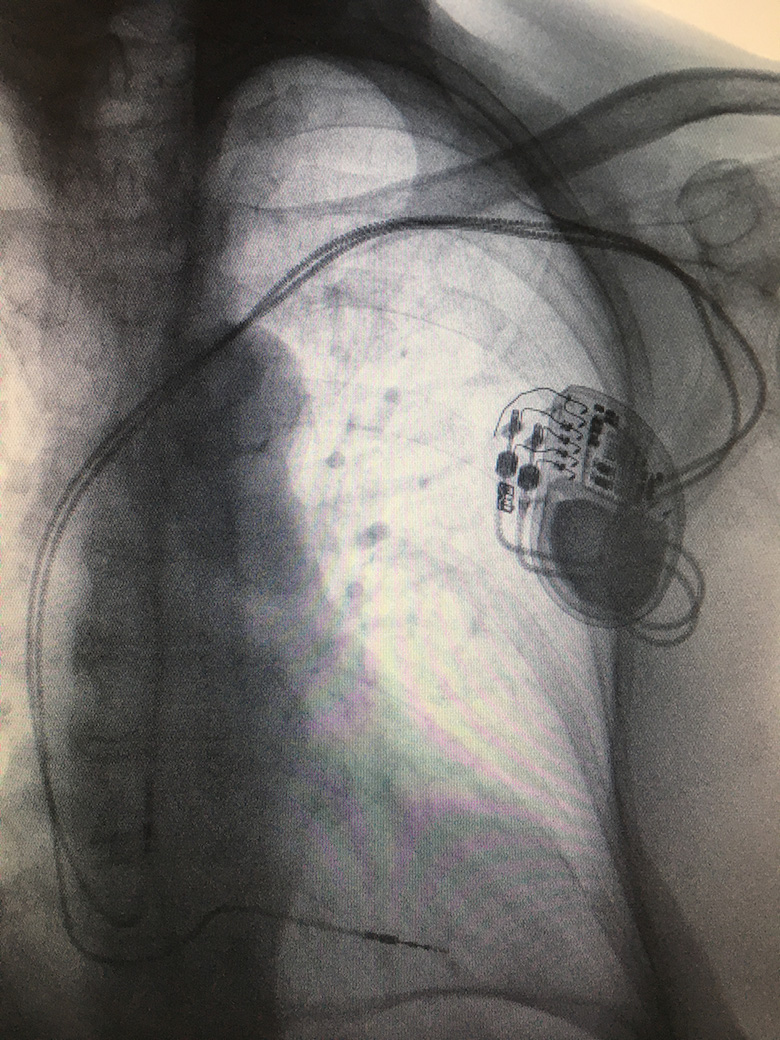Permanent Pacemaker (PPM) insertion
A conventional permanent pacemaker (PPM) is a small device containing a battery and automatic generator connected to one or two electrical leads. This invasive procedure is used to treat slow abnormal heart rhythms, known as bradyarrhythmia.

Dual chamber pacemaker
The procedure is performed by a cardiologist, under local anaesthetic and light sedation, in sterile surgical conditions. A 3-4cm incision is made on the chest wall approximately 1cm below the collar bone. The subclavian, axillary or cephalic veins are located close to here. These are accessed to pass and secure electrical leads under X-ray guidance, within the right ventricle and right atrium, if required, before connecting to a pacemaker device.
After the pacemaker is fitted, patients usually stay overnight in hospital and undergo a chest X-ray, pacemaker check and wound review before being discharged home. Heart rhythm pacing devices require regular long term follow up after discharge. Conventional pacemaker battery life can last 8-10 years, depending on individual use and circumstances, before requiring a battery change procedure.
Pacemaker procedures are invasive and involve permanent implants. There are small degrees of risks involved, including infection, bleeding, lead displacement, pneumothorax (puncture of the lung), tamponade (puncture of the heart) and lead failure, which would be discussed in advance with your specialist.


